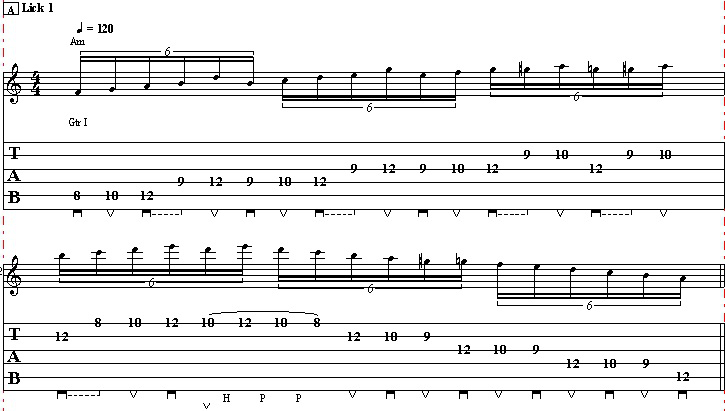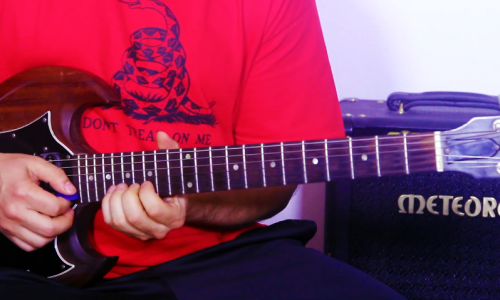Now, the key part of this is getting the rhythm and
it’s not quite so much like a country picking style
where you have to alternate really vigorously between
bass notes. You don’t have to do that. It’s more like
the open E and of course the high E allows you to leave
open strings and just kind of use it to create like a
bass texture. You can actually run leads underneath it
by just keeping the open string. Hear how that gives it
like a tonality? If you were just to play it on its own
like… It doesn’t really have any context. But when you
try and use little parts of the chord — and I’m going
to show you how to do that in a minute.
So back to that first part on the E, because for most
of this we’re going to be using the basic blues chords,
just like a 12 bar progression, like an E-7, an A-7 and
a B-7. There might be a few Gs thrown in there, too.
I’ll show you the right time to put that kind of thing in.
But back to this lick.
Basic E chord. That’s our first two notes, just both
the open E strings. And you can, if you want, use a
couple of fingers and I’m going to talk about the
actual — the right hand technique a little bit later.
But for now just kind of do whatever feels comfortable
and just get the notes. We can almost put an open B in
there as well.
So we’re getting like a little counter melody. We’ve
got this… The pattern, just for this basic part, is…
So it’s low E, high E, we’re going to flip back to the
low E for the pick-up and we’re going to go into that,
the D note on the 3rd fret of the B string and then back
to the open E. And the D and the E sound really good when
they ring into each other. It kind of gives it a fluid
sound like… So just try this, just taking the E chord
and then the pinkie.



